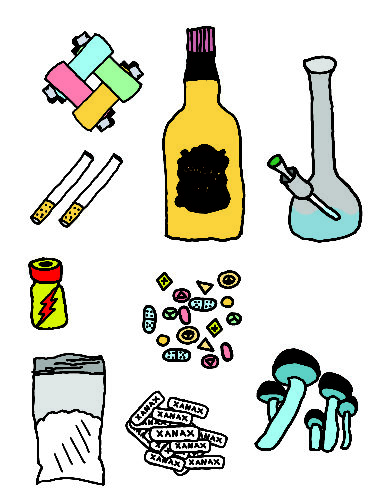Not all of us will graduate college, give birth, win a Rose Bowl or even cook a Thanksgiving dinner, but we all will eventually die. Our own mortality and that of our loved ones is not something we spend a lot of time thinking about and planning for, but it should be.
To die a green death
Not all of us will graduate college, give birth, win a Rose Bowl or even cook a Thanksgiving dinner, but we all will eventually die. Our own mortality and that of our loved ones is not something we spend a lot of time thinking about and planning for, but it should be.
We have a major taboo in our country regarding death. Our hush-hush attitude, besides being weird and unnatural, is arguably going to cause environmental problems. We cannot keep going forward with our current funeral practices without reexamination. Some in Oregon are starting to consider going green, even in death.
Since the Civil War, the practice of embalming bodies and holding elaborate funerals with open caskets has become increasingly popular. There are many explanations for this, ranging from claims that it stops the spread of disease to monetary gain from the funeral industry—and that it helps family members seeking closure in losing a loved one.
Embalming involves emptying the body of blood and replacing it with embalming fluid, which is largely made up of formaldehyde. This preserves and disinfects the body, making death seem more hygienic and less disturbing. Regardless of the excuses for embalming, burying a body full of chemicals is a blatant form of pollution.
There is a common misconception that embalming is required by law. This is simply not true.
According to a Journal of Environmental Health article by Jeremiah Chiappelli, the EPA has classified formaldehyde as a probable carcinogen since 1987. A recent Journal of the National Cancer Institute study concluded that long-term exposure to formaldehyde among funeral workers puts them at an increased risk for fatal myeloid leukemia, among other problems.
The dangers are known in direct exposure, but there is a bit of a gray area when considering the traces that leak into the ground.
According to Chiappelli, concerns were raised in the 1980s by a national groundwater task force pertaining to the pollution impacts of cemeteries, but they were dismissed due to lack of study. It seems no large-scale studies have been done. This is very irresponsible.
Chiappelli stated that from the millions of Americans being embalmed each year, seven million gallons of formaldehyde are being buried in the ground.
The EPA considers formaldehyde a hazardous chemical, but has tiptoed around this issue—arguably because of the death taboo. Chiappelli claims that an embalmed body should technically be considered toxic solid waste, but the EPA does not do this, so as to not upset mourning families.
Even if studies haven’t proven direct negative effects of these traditional burials, common sense tells us that this practice is far from environmentally friendly. With ever increasing populations, our planet has only so much space to devote to cemeteries, not to mention the resources and material used to make elaborate caskets. Embalming fluid constantly leaking into the ground is eventually going to cause problems if it hasn’t already. Due to these factors, a “green death” industry is evolving.
Oregon is on the leading edge of this new—and necessary—trend in death. Several green burial businesses have sprouted up in recent years. Among them, according to The Oregonian, are Natural Burial Company in Eugene, owned by Cynthia Beal, Cornerstone Funeral Services and Cremation in Boring, owned by Elizabeth Fournier, and Portland Natural Caskets, owned by Scott Cummings.
Traditional local cemeteries such as Riverview Cemetery are even beginning to set aside land for green burials according to David Noble, executive director. The Estacada Funeral Chapel and Estacada Cemetery District are also teaming up to create green funeral packages according to The Oregonian.
The major component distinguishing green burials is that the bodies are not embalmed and the caskets are biodegradable.
Deb Harris, professor for the School of Community Health, was quoted in The Oregonian as saying she thinks one reason this is so easily taking root here in Oregon is our lack of regular churchgoers. We are not tied to religious notions of what our own funeral should entail.
It seems our eco-friendly, earth-centric attitudes allow us to choose to return to the earth in a much more natural and less damaging way. Oregonians like to break taboos, and this death taboo is one that needs to be broken for our own good and the good of future generations.
For those of you who worship the almighty dollar, green burial could be a great option for you too, as is often the case with eco-friendly solutions: These burials are generally about half the cost of traditional ones.
Professionals in the funeral and cemetery industries use terms such as “end of life” in the place of death to sugarcoat the topic. If we let death be what it is and engage in rational thoughts about it periodically, it may not be so shocking and devastating when it touches our family. Because it will.
We should all be prepared to be environmentally responsible, even in the sensitive area of death and funerals.



